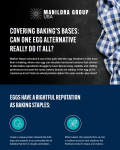ARS scientists look to tap sugar beet pectin potential
extraction times and expand the potential of the ingredient,
suggests research from the ARS.
Pectin, with worldwide production estimated at 35,000 tonnes a year, is currently widely used as gelling agents in jams, confectionary, and bakery fillings, and stabilisers in yoghurts and milk drinks.
The functionality of the ingredient is dictated by the chemical fine structure, and the majority of the pectin used currently come from citrus peel and apple pomace.
Other sources of the ingredient have remained largely unexploited because of certain less desirable structural properties.
One such source that is gaining increasing attention is sugar beet pectin, with chemical features that could offer novel alternatives to the citrus and apple pectin.
One such example was highlighted recently by German researchers who examined the potential of sugar beet pectin to encapsulate oil ingredients, like omega-3, as an alternative to more traditional encapsulating agents like milk proteins and gum Arabic.
Currently, about 1.5 million tons of dry beet pulp are generated by US-based beet processors, and this could offer a valuable source of pectin, assuming this could be done economically.
Researchers from the ARS' Crop Conversion Science and Engineering Research Unit, Eastern Regional Research Center (ERRC) in Pennsylvania, are working on new processes to efficiently isolate sugar beet pectin and other polysaccharides and increase their value.
The current conventional heating extraction of pectin from plant material takes over an hour with care taken not to destroy the structure by overheating.
To save time and reduce cost, Marshall L. Fishman, an ERRC chemist, developed microwave and steam-injection techniques to heat fruit peels with acidified water in pressure-resistant containers.
"Using these 'flash extraction' methods, pectin can be extracted in just 10 minutes," explained ERRC chemist, Marshall Fishman in the current issue of Agricultural Research magazine.
"They use less energy and yield higher quality pectin than conventional heat extraction."
Fishman has turned his attention to extracting pectin from sugar beet pulp at lower temperatures than those currently employed to extract pectin from citrus.
The research has been extended by former ERRC plant physiologist, Brett Savary, who has been evaluating citrus fruit and sugar beet enzymes for use in modifying the properties of pectin and other cell wall polysaccharides.
Such an approach could lead to the development of "designer" pectin.
A distinctive enzyme from citrus was identified by Savary, and, along with researchers at the ARS Citrus Products Laboratory in Florida, a patent has been filed to produce the enzyme and determine its usefulness for manufacturing "designer" food-grade pectins.
It may also be possible, said the researchers, to combine the 'flash extraction' and the enzymes to extract arabinan, another polysaccharide present in cell walls that could also be commercialised from sugar beet pulp.
Source: Agricultural Research magazine February 2007 "Pectin Extraction From Citrus and Sugar Beets "














